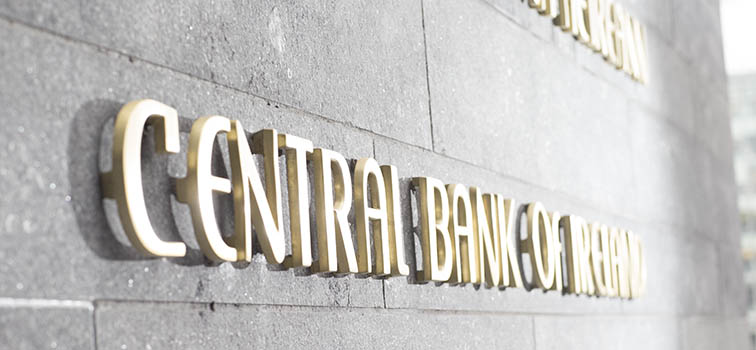Banks directed to adhere to new capital requirements from July 2019
05 July 2018
Press Release

- Extra capital requirement during upswings provides protection against future downturns
- Research evidence supports activation of buffer early in economic cycle
- Banking sector has sufficient capital to absorb increase.
The Central Bank of Ireland has today triggered the countercyclical capital buffer (CCyB). From 5 July 2019, banks in Ireland will be required to hold an extra capital buffer equivalent to one percent of their Irish risk-weighted exposures.
Read the countercyclical capital buffer rate announcement (PDF 722.33KB)
Read the CCyB Explainer on the Central Bank Consumer Hub
Since its inception in December 2015, the Irish CCyB has been set at zero percent. In line with international regulations, there is a one-year notice period before the new CCyB rate of one percent will be effective (July 5 2019). The activation of the CCyB is to promote resilience in the banking sector: by requiring extra capital during upswings in the financial cycle, credit supply during future downturns can be supported by a corresponding reduction in the CCyB. The current levels of capital in the banking system are in excess of regulatory requirements, including the new counter-cyclical capital buffer.
The research also published today supports the case for activating the buffer sufficiently early in the economic cycle, in order to ensure that the buffer is available for future downturns.
The reasons for activating the CCyB relate to the sustained trajectory in a number of relevant indicators as set out in the Central Bank’s announcement (PDF 722.33KB), but include:
- The strengthening of a range of credit indicators
- Rapid growth in the domestic economy, which is moving closer to capacity limits
- The highly volatile nature of the Irish economy and its vulnerability to external risks
- Vulnerabilities in the financial system, including high levels of household indebtedness and the still-high stock of non-performing loans, which compound cyclical risks.
Commenting on the activation of the CCyB, Governor Philip R. Lane said: “As a small, open economy vulnerable to a range of external risks, the CCyB is an important tool to support a more stable financial system that is less prone to boom-bust cycles.
“The CCyB complements our other macro-prudential measures such as the borrower-based mortgage measures and the O-SII (Other Systemically Important Institutions) buffers.
“We are also publishing our research today on the CCyB, in line with our transparency commitment to provide the evidence base for our macro-prudential policy decisions.”
CCyB FAQ
Notes
An Economic Letter (PDF 842.25KB)by Matija Lozej and Martin O’Brien titled ‘Using the Countercyclical Capital Buffer: Insights from a Structural Model’ examines the effect of activating the CCyB at different stages of the economic cycle. Activation is modelled at a point in the cycle that sees demand-driven economic expansion, resulting in increases in consumption, investment, lending and output.
The key findings of the Economic Letter are:
- Without the activation of the CCyB, bank resilience is diminished for an extended period as the increase in banks’ capital is proportionately smaller than the increase in banks’ lending
- Activating the CCyB sufficiently early in the economic cycle alleviates a short-run decrease in bank resilience and enhances the resilience of banks in the medium-to-long term
- In contrast, a delayed activation of the CCyB results in reduced bank resilience persisting for a longer period
- The cost of incorrectly timing the tightening of the CCyB by ‘moving too early’ is found to be small
- The impact of activating the CCyB on wider economy activity is relatively small and smaller still when the banks’ actual capital ratios are above their regulatory minimum requirements.
A Financial Stability Note (PDF 0.99MB)by Eoin O’Brien, Martin O’Brien and Sofia Velasco, titled ‘Measuring and mitigating cyclical systemic risk in Ireland: The application of the countercyclical capital buffer’ outlines the high level approach taken by the Central Bank of Ireland to its setting of the CCyB on Irish exposures.
The key findings of the Financial Stability Note are:
- The CCyB is now becoming an increasingly relevant and actively used macro-prudential policy tool across Europe
- Recognising the build-up of cyclical risks in a timely manner is crucial to the effective implementation of the CCyB
- In Ireland, the analysis of the financial cycle needs to adjust for the special features of the previous boom-bust cycle and the impact of multinationals in the economic and financial data.
Further notes
MiFID investment firms that are subject to the Capital Requirements Regulation and Capital Requirements Directive IV will also be required to hold capital equivalent to one percent of their Irish risk-weighted exposures.